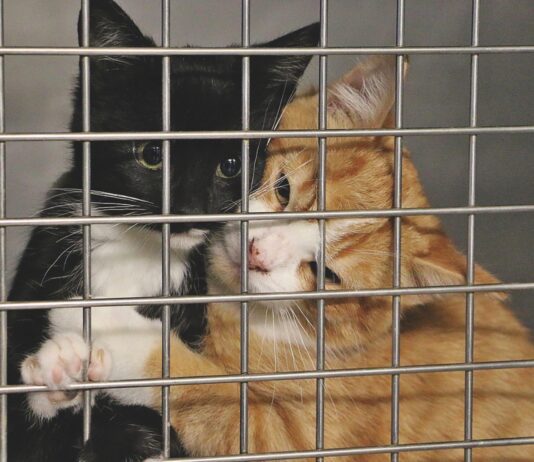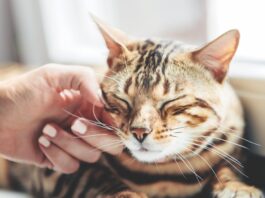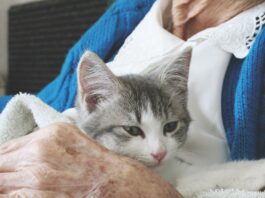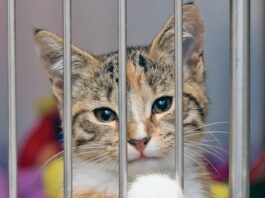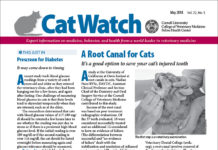Paw Preference by Gender
A study from Queens University, Belfast, says cats exhibit clear paw preference, much as humans do. Researchers recruited 24 neutered male and 20 spayed female cats and asked the cat owners to collect data on which paw cats used when they stepped down the stairs or over objects, whether they slept on the left or right side of their body, and which paw the cat used to reach for food inside a three-tier food tower.
Prescreen for Diabetes
A recent study took blood glucose readings from a variety of cats 8 years old and older as they entered the veterinary clinic, after they had been hanging out for a few hours, and again after fasting. One challenge of measuring blood glucose in cats is that their levels tend to skyrocket temporarily when they are stressed, such as at the clinic.
A Root Canal for Cats
A study at the University of California at Davis looked at root canals in cats. Nadine Fiani BVSc, DAVDC, Assistant Clinical Professor and Section Chief of the Dentistry and Oral Surgery Service at the Cornell College of Veterinary Medicine contributed to this study.
End Grooming Battles
I am a Tortie-colored chunky girl who tips the scales at almost 15 pounds. I have long hair that gets matted on my lower spine area, and I become wild and aggressive when someone tries to brush me there.
Five Tips for Using Therapeutic Diets
Get the most out of your cats pricey new food
Use Diet to Support Urinary
Nutrition plays a key role in your cats health, and his urinary tract is no exception. If your cat is diagnosed with a urinary-tract disorder, such as kidney disease, feline idiopathic cystitis, bladder stones, or urinary-tract infections, your veterinarian may recommend switching to a urinary diet to help manage the condition and help prevent further problems. But there are many more factors that influence urinary health that you can monitor.
Low-Calorie Treats for the Rotund Cat
People love to give their pets treats and pets love to eat them. Whats not to like? The catch is when your cat is on the round side and needs to lose some weight. You would still like to reward her for good behavior and possibly use some treats for training. What are good options?
Cat-Food Roulette
Life can bring valid reasons for switching your cats food, including an illness that requires a specific diet or a discontinuation of the formula you usually feed. Or maybe youve heard good things about a new brand and want to try it out. Or theres a great deal on a brand of cat food this month . . . the reasons are endless. So, is it OK to switch? Yes, just make the switch sensibly.
Urinary Problems: Herbs Are Not the Answer
A study in the Journal of Feline Medicine and Surgery looked at using Chinese herbs to treat cats with urinary-tract problems. As we wrote in our September 2017 issue (go to catwatchnewsletter.com archives to read the article), lower urinary-tract problems are common in cats. The cause might be infection, crystal formations, or may be without known cause-the infamous idiopathic cystitis.
Stem Cells for Feline Asthma Woes
Stem-cell injections are common in veterinary medicine, but mostly for joint and lameness problems in dogs and horses. A pilot study in the Journal of Feline Medicine and Surgery may change things for cats with asthma.
Are Essential Oils Safe for Your Cat?
The growing popularity of essential oils for health, ambiance, and behavior modification has led to real feline-safety concerns. The problem is that cats have a unique set up for enzymatically metabolizing many compounds in their liver, so something safe to use around dogs and humans may still be toxic to your cat.

